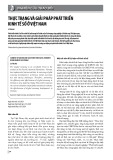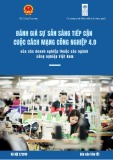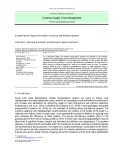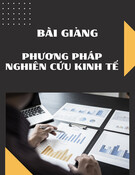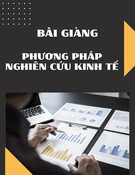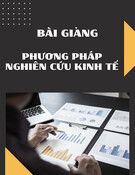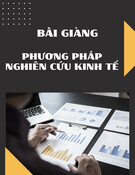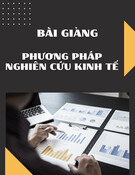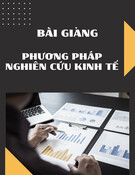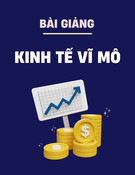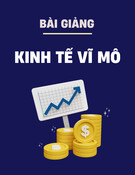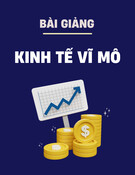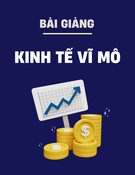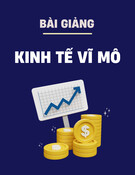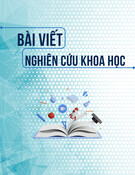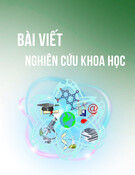
http://www.iaeme.com/IJM/index.asp 100 editor@iaeme.com
International Journal of Management (IJM)
Volume 10, Issue 2, March–April 2019, pp.100–116, Article ID: IJM_10_02_009
Available online at http://www.iaeme.com/ijm/issues.asp?JType=IJM&VType=10&IType=2
Journal Impact Factor (2019): 9.6780 (Calculated by GISI) www.jifactor.com
ISSN Print: 0976-6502 and ISSN Online: 0976-6510
© IAEME Publication
SHARING ECONOMY IN PEOPLE, PROCESS
AND TECHNOLOGY PERSPECTIVE : A
SYSTEMATIC LITERATURE REVIEW
Ratna Sari
Computer Science Department, BINUS Graduated Program-Doctor of Computer Science,
Bina Nusantara University, Jakarta 11480, Indonesia
Information Systems Department, School of Information Systems, Bina Nusantara University,
Jakarta 11480, Indonesia
Meyliana*
Information Systems Department, School of Information Systems, Bina Nusantara University,
Jakarta 11480, Indonesia
Achmad Nizar Hidayanto
Faculty of Computer Science, Universitas Indonesia, Depok 16424, Indonesia
Harjanto Prabowo
Information Systems Department, School of Information Systems, Bina Nusantara University,
Jakarta 11480, Indonesia
Management Department, BINUS Business School Undergraduated Program, Bina Nusantara
University, Jakarta 11480, Indonesia
*corresponding author
ABSTRACT
Currently a new economic development era has occurred, starting from the concept
of sharing, sharing economy becomes a phenomenon in this era. This concept also,
developed an early concept of new economy that initiates change through sharing even
without ownership. An important factor in sharing economy is cooperation between the
service providers, service users and companies whom provide applications include with
method of profit and earning allocation which able to measure company feasibility and
effectiveness. Sharing economy considered with many advantages, not only able to
share but also provide benefits for company and consumer. Using people, process and
technology perspective, this research describes sharing economy model more
systematically. The purpose of this study aims to see and describe the model of sharing
economy with people, process and technology perspective by gain deeper understanding
of the concept. Furthermore, this research expected able to contribute and observe
related to the industry, whom adopting the concept of sharing economy. This research
method used Systematic Literature Review by founded study using the specific keyword

Sari, Meyliana, Achmad Nizar Hidayanto and Harjanto Prabowo
http://www.iaeme.com/IJM/index.asp 101 editor@iaeme.com
from previous research. From 30 selected papers, this research’s result there are 5
variables of sharing economy model adopted from people, process, technology:
(1)Community; (2)Networking; (3)Access Ownership, (4)Platforms, (5)Payment
Systems
Keyword: sharing economy, collaborative, people-process-technology, systematic
literature review, framework
Cite this Article: Sari, Meyliana, Achmad Nizar Hidayanto and Harjanto Prabowo,
Sharing Economy in People, Process and Technology Perspective: a Systematic
Literature Review, International Journal of Management, 10 (2), 2019, pp. 100–116.
http://www.iaeme.com/IJM/issues.asp?JType=IJM&VType=10&IType=2
1. INTRODUCTION
"Sharing" means own or use something at the same time; share with two or more unknown
persons nor strangers even have relationships which the concept was changed who allows others
to use without possession but still possess with same ownership rights; engage and take
responsibility for use and the ownership [1]. From that understanding, the previous research
said sharing is a concept that has been started since the beginning where this concept became a
phenomenon for digital economy in the Internet era [2].
Jakarta, the capital city of Indonesia, is an eyewitness to the rapid development of this new
economy concept, whom without ownership, but still enjoys the benefits and has the right to
consume [3]. One of popular sharing economy research came from transportation development,
which started from UBER in 2009 able to arousing passion of new economic concept by having
authorized to consume without changing the ownership [4]. This concept consider flexsibility
for the customer nor service users by using apps platform which being e-marketplace for the
driver as service provider and also customer as service user [5].
From those explanation, eventually developed an early concept of a new economy and also
initiated a simple concept through the sharing of ownership or better known as collaborative
(sharing) economy [6]. Sharing Economy is an option for self-ownership that is emphasized
where two or more individuals can enjoy the benefits (or costs) come from owning something.
No longer "I" or "yours" property but seeing something as "belongs to us" [1]. Another previous
research said this concept also know as online peer to peer; economic transaction between
individuals vs individuals, company vs individual and company who act as supporting service
platforms [7].
In sharing economy previous research, company almost never have the asset ownership but
still able gain the benefits nor profit which based on ability of company to provide convenience
in obtained with the main characteristics: 1) they have temporary access, non-ownership in the
use of products and services; 2) integrated with internet, especially web 2.0 access [8].
The main factor in sharing economy is collaboration and teamwork between customer,
company as applicaton platform provider which profit allocation able to measure the feasibility
and effectiveness in the company also able to analyze the progress of its feasibility [9], from
this point needs detail explanation through the comprehension of sharing economy concept and
model applied in sharing economy nowdays.
According to explanation above, this research question wants to be answered is what are
factors related to sharing economy in people, process, technology perspective?
As we know this research is currently new but every year become popular topic and
interesting to discuss. Starting from model and the factors in sharing economy concept between
consumer, company as technology provider bridges nor connector. Different country, different

Sharing Economy in People, Process and Technology Perspective: a Systematic Literature Review
http://www.iaeme.com/IJM/index.asp 102 editor@iaeme.com
concept and the model sharing economy is not standardized. The model developed based on
government regulations, therefore this research purpose aims :
Deeply understanding of sharing economy concept and also sharing economy model
Found the factors in sharing economy related with people, process, technology
perspective [10]
2. LITERATURE REVIEW
2.1. Sharing Economy
The term of 'sharing' in sharing economy basically refers to use and access of human resources
or assets. Everyone involved and they gets the benefits by sharing the assets they have [11].
Sharing Economy refers to peer-to-peer sharing of goods, services, and information
coordinated through community based on technology services. Peer to peer means person can
be consumers as well as producers for other person [12].
Another definition of sharing economy, said that “sharing economy is new type of model
business, which creates the principle of sharing for resources between person nor individu
through peer-to-peer services and posibble to use product nor service when they need it [13].
Table 1, shown the previous research about sharing economy concept with different
definitions as well:
Table 1: The Definitions of Sharing Economy
Refences
Definitions
Shaheen, Mallery,
and Kingsley
(2012) [14]
A model that emphasizes “access” or “sharing” instead of ownership
Belk, (2010) [15]
“The act and process of distributing what is ours to others for their use and the
act and process of receiving or taking something from others for our use”
Daunoriene et al
(2015) [16]
An alternative to private ownership that is emphasized on market exchange and
gift giving.
Bardhi & Eckhardt,
(2015) [17]
Access over ownership is the most common mode of exchange. Access over
ownership means that users may offer and share their goods and services to
other users for a limited time through peer-to peer sharing activities, such as
renting and lending
Filippas &
Gramstad (2016)
[18]
Online peer-to-peer marketplaces as platform for easier access to goods and
services.
Roh (2016) [19]
A new economic model beyond the paradigm of mass production and
consumption.
Cheng (2016) [20]
The phenomenon of peer to peer sharing of access to underutilized goods and
services, which prioritizes the utilization and accessibility of ownership
Munoz & Cohen
(2017) [21]
A socio- economic system enabling an intermediated set of exchanges of goods
and services between individuals and organizations which aimto increase
efficiency and optimization of under-utilized resources in society.
Kumar, Lahiri &
Dogan (2017) [22]
The monetization of underutilized assets that are owned by service providers
(firms or individuals) through short-term rental
Kooti et al (2017)
[23]
Exchange services in a peer-to-peer fashion, through match- ing markets
facilitated by social networks and online applications.
Godelnik (2017)
[24]
A facilitation between stranger for share and utilized in reduce cost but gain
benefit.
Böcker & Meelen,
(2017) [25]
Consumers granting each other with temporary access to their under-utilized
physical assets (“idle capacity”), possibly for money.

Sari, Meyliana, Achmad Nizar Hidayanto and Harjanto Prabowo
http://www.iaeme.com/IJM/index.asp 103 editor@iaeme.com
Belk, (2014) [2]
Dividing something between relative strangers or when it is intended as a one-
time act such as providing someone with spare change, directions, or the time of
day.
Professor Yochai Benkler, Harvard University in his writing mention the prediction of
social networking boom where each of individual would do sharing in meet their needs [26].
Previous research of sharing economy mentioned, there are some things that make this
sector interested which the key elements are: shifted ownership; trend of technology; economic
needs; digital native hood; convenience and opposed consumption [3],[24],[27].
Talked about the characteristics of the company who is adopting the sharing economy,
mentioned with explanation like: (1) business idea “unlocking value” according to utilization
of non-optimal assets for monetary or non-monetary benefits; (2) values adopted such as
transparency, humanity, and authenticity for short and long term strategic decisions; (3) The
providers of services are empowered as well as companies committed to making life service
providers have better economic and social; (4) customers will get goods and services in a more
efficient way that they pay for access but not ownership; [28].
Main benefits of sharing economy known as two ways impact for the company and individu
such as: (1) Reduce the negative impact on the environment by reducing the amount to be
produced that saves industrial pollution (such as reducing carbon footprint and human resource
consumption); (2) Reduce production costs and enable recycling; (3) Increasing independence
and flexibility; (4) Accelerate consumption patterns and sustainable production in cities around
the world; (5) Improved service quality through rating system provided by users; (6) Increased
flexibility of working hours and wages [8],[29],[30].
2.2. People, Process Technology Perspective
The successful of implementation for nowdays assosiated with people, process and technology
[31]. In sharing economy, without doubt the same concept implemented and build by involving
people, process and technology whom support all process and transaction [12].
Simple definition of people in sharing economy concept is person or individu who is doing
sharing, without any relationship, not knowing each other but share each other [1] while, for
the concept of "process" is a way to connect "people" and encourage to share by calculate the
economic value and benefits for all parties [25].
Previous research mentioned as technology based. According to Böckmann, (2013) [25]
one of main important factor which encourage sharing economy is technology that has helped
Sharing Economy to become what is now [1].
In table 2, explained about definition people, process and technology in sharing economy
based on previous research:
Table 2: The Definitions of People, Process, Technology in Sharing Economy
References
People
Process
Technology
Conte, (2016) [1]
Can use, share, without
ownership.
The way of consume,
engaging and joint
activity, focusing on
their interactions with
customers/riders.
New kind of inter-
personal relationship
mediated
Banerjee, Freund, &
Lykouris, (2016) [32]
Willing to share with,
fullfil the needs of
his/herself and others.
-
A systems, whom
customers have access
to a collection of
personal needs which
can be engaged
anytime.

Sharing Economy in People, Process and Technology Perspective: a Systematic Literature Review
http://www.iaeme.com/IJM/index.asp 104 editor@iaeme.com
Kumar, Lahiri, &
Dogan, (2017) [22]
Who coordinating,
acquisition and
distribution without any
relationship or
sometimes ownership.
The process of
distributing what is ours
to others for their use
and the process of
receiving or taking
something from others
for our use.
The digital concept of
UI, ease payment
transaction, tracking,
product nor service
availability and respond
time.
Böckmann, (2013) [13]
The needs of value
without belongings
(non ownerships) who’s
participating in shared
economy.
The measurement of
shared in economic way
and the value of
aquiring in shared
concepts.
Facilitates peer to peer
transactions.
Böcker & Meelen,
(2017) [25]
Who participate,
engaged, consumption.
-
-
Cheng (2016) [20]
Who coordinating,
consumption and
distribution with fee
nor economic benefits.
The way to encourage
both parties whom
participate in sharing
economy to promote,
create jobs.
The facilitations and
enhance how to do
share with.
Munoz & Cohen
(2017) [21]
The network who
cannot buy but can pay
to who needs extra
income in particular
shared and gain benefis
each others.
The model of how to
utilized, and connect by
relies on mobile
connectivity
Platforms of
collaborations.
3. METHODOLOGY
In this study author used a comprehensive literature review methodology of previous studies
on sharing economy model about the relationship between the company as service providers,
vehicle owners, and user as consumer.
In this research process was divided to: (1) determine the research sources; (2) determine
the keyword patterns for the search process, (3) match criteria with research objectives, data
mining, and analysis of findings and answers to the research questions. The paper based on
previous publication date 2009 until now. Structure of the paper complete, which means all
identity (journal/conference, identity of author, etc) is mentioned in the paper.
This paper adopted people, process, technology perspective from Bruce Schneier (1999)
[10] which developed the original model “The Diamond Model” from Leavitt, H. J. (1964)
[33]: structure, technology, people dan task.
Picture 1: “Diamond Model” [33] Picture 2:“People-Process-Technology” [10]
3.1. Search Process
In the first step, author defined the source of literature:
• ACM Digital Library (dl.acm.org)

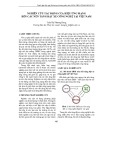
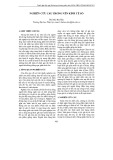
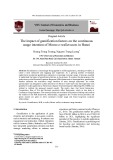
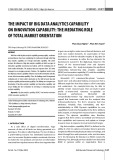
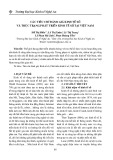
![Kinh tế số Việt Nam: Chính sách và thực thi [Cập nhật mới nhất]](https://cdn.tailieu.vn/images/document/thumbnail/2024/20241028/gaupanda058/135x160/4241730112118.jpg)
